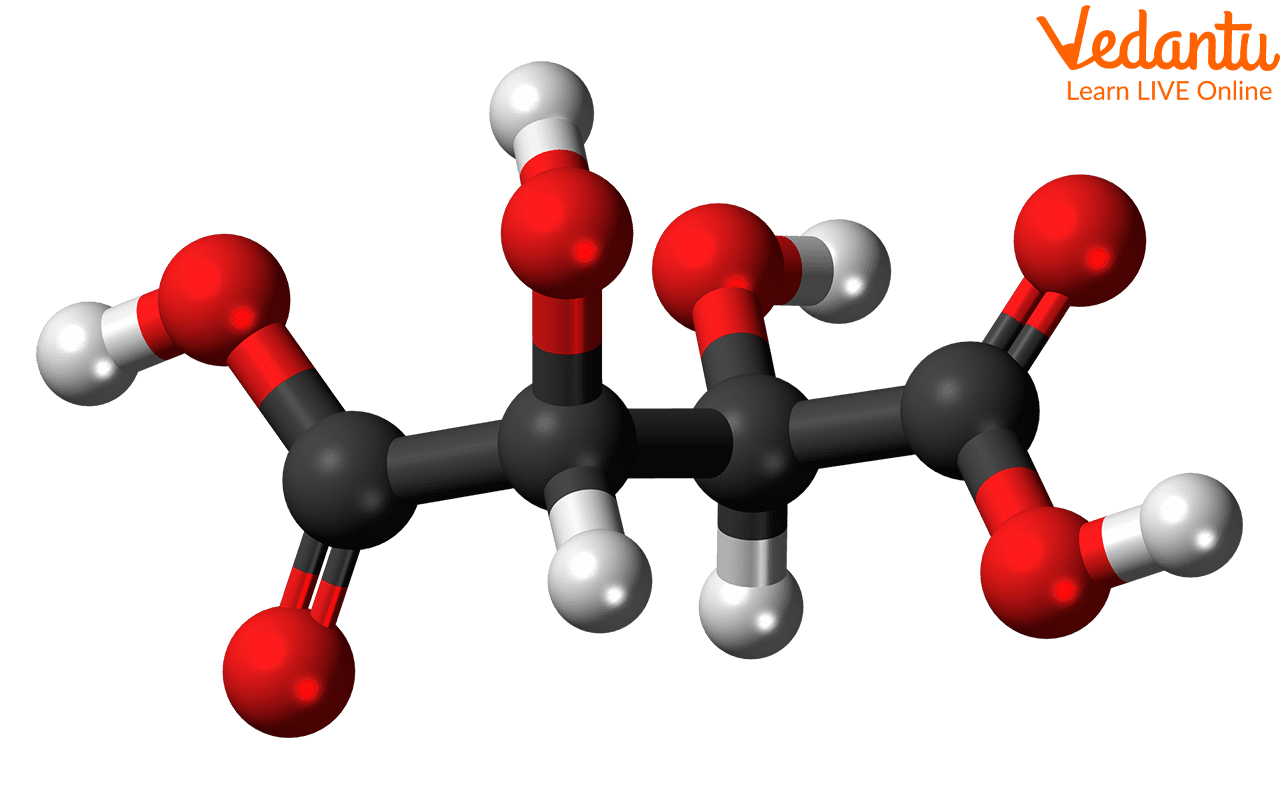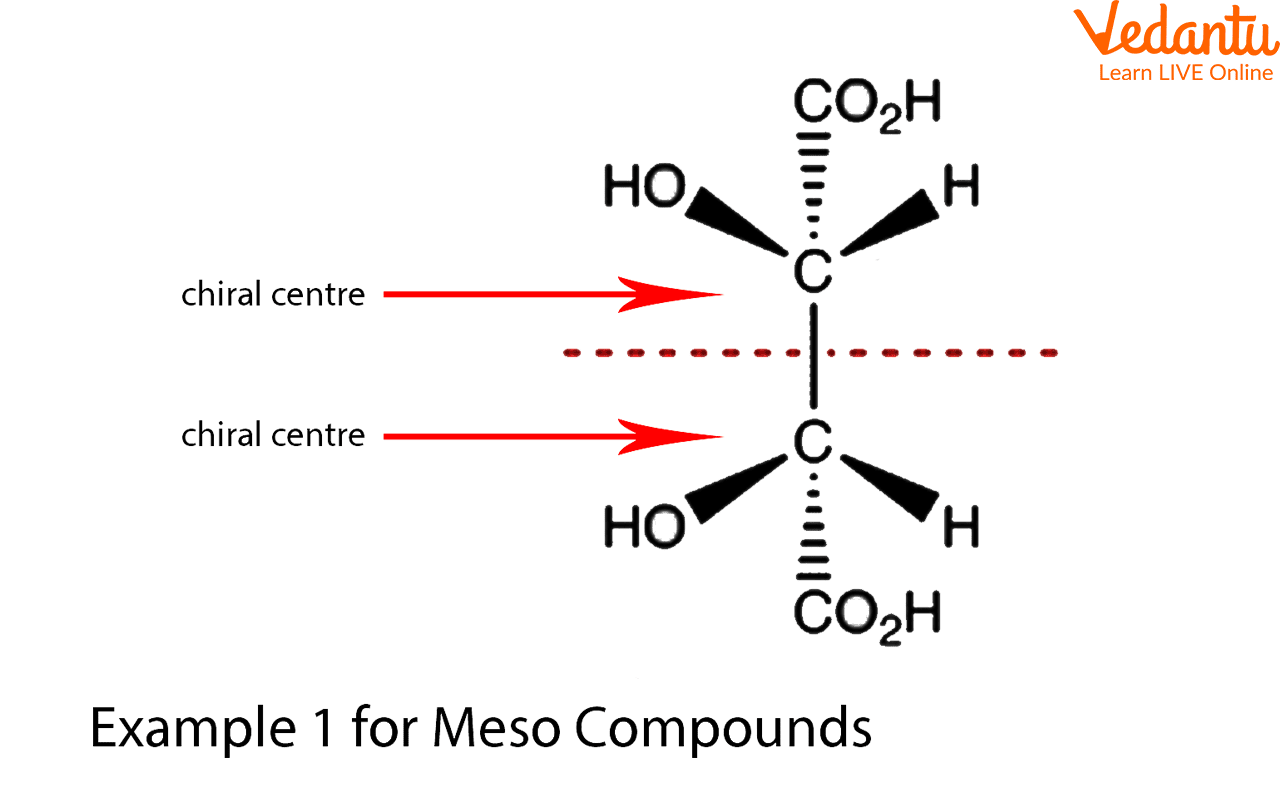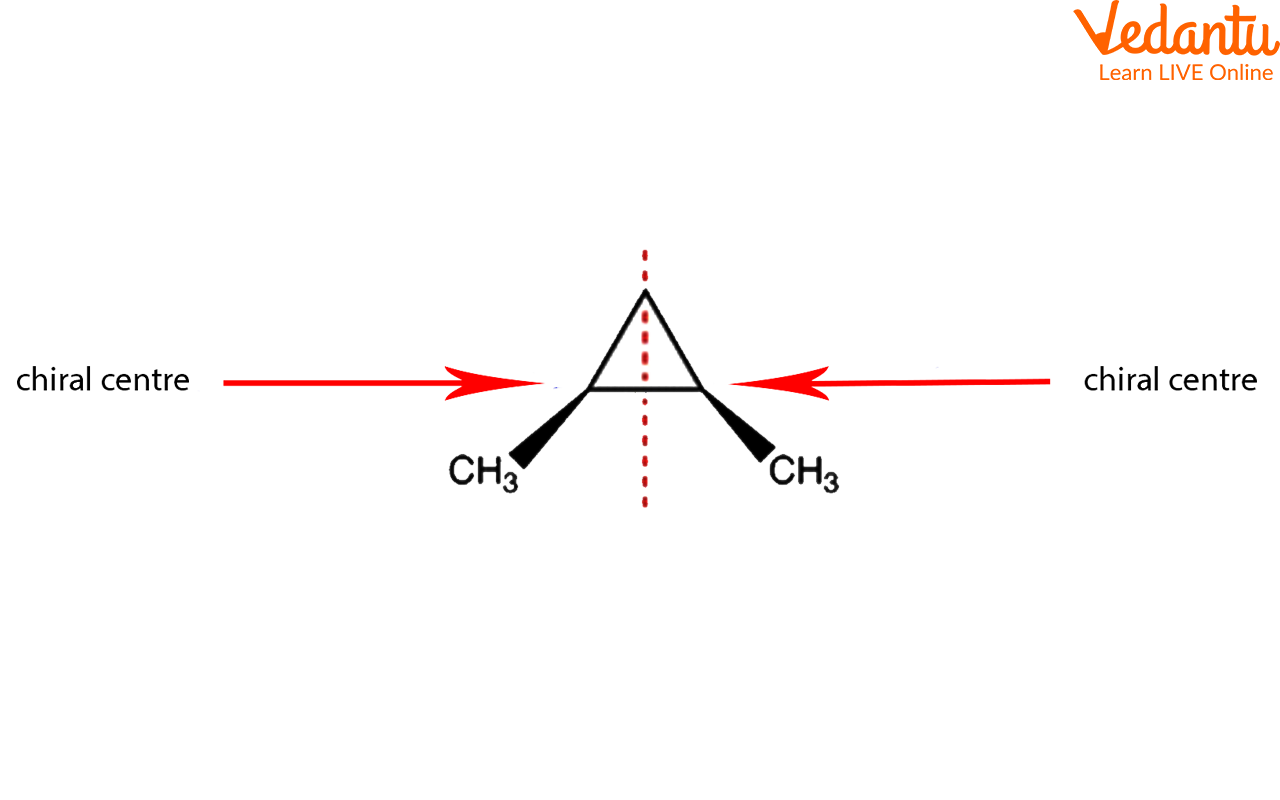




What are Meso Compounds?
Meso compounds are symmetric or achiral compounds that have stereocenters. A meso compound, despite having two or more stereocenters, is optically inactive and possesses an inner symmetrical plane that allows it to be superimposed on its mirrored counterpart. Mesomers, therefore, are organic compounds with comparable chiral carbons on both sides, giving in zero net rotation.

Meso Compounds
What are Meso Compounds?
Meso compounds are achiral compounds with multiple chiral centres. It is optically inactive despite possessing stereocenters since it is superimposed on its mirror counterpart. It also possesses an inner plane of symmetry.
A meso compound or meso isomer is a stereoisomer that has at least two optically active members but is otherwise inactive. Despite having two or more chiral carbon centres, this indicates that the compound is not chiral.
Identification of Meso Compounds
A symmetrical plane within the compound separates it in half. The inner mirror allows these two sides to reflect one another. In meso compounds, the stereochemistry around chiral centres must "cancel out." This indicates that when a compound is divided into two symmetrical halves by an internal plane, the stereochemistry of the left and right sides should be in opposition to one another and result in an optically inactive compound.
Let ‘A’ be a meso compound. We know that a meso compound must include R and S stereochemistry, two or more stereocenters, and an inner plane.
To find out if ‘A’ is meso, we must first search for an inner plane or inner mirror.
When evaluating if a chemical is a meso compound or not, stereochemistry is extremely important. Because a meso compound is optically inert, its stereochemistry tends to cancel out. If a meso compound has two stereocenters (R and S), then R must cancel out S.
Note:
Covalent bonds or \[s{{p}^{3}}\] orbitals have an interesting property that we can twist the substituted groups linked to a stereocenter to identify the inner plane. The stereochemistry of the compound does not vary as it is rotated.
The other scenario is when the entire structure is rotated by 180 degrees. Both of the components are still meso.
Meso Compounds Examples
As noted previously, a meso compound must have at least two chiral \[s{{p}^{3}}\] hybridized atoms and at least one inner plane that divides the molecule into two mirror images. Tetrahedral centres are present, which prevents the molecule from being planar. An achiral compound won't rotate planar polarized light even if it just contains one element of symmetry. Meso compounds lack optical activity because of this.
Exception: The nitrogen atom in tertiary amine is not \[s{{p}^{3}}\] hybridized, even though the compound is meso.
1. This compound is achiral because it possesses a plane of symmetry. But because it contains two chiral carbon atoms, it is a meso compound.

Example for Meso Compounds
2. This molecule has two chiral sites and is achiral since it possesses a symmetrical plane. It is a meso compound as a result.

Example for Meso Compounds
Optical Activity of Meso Compounds
A meso compound or meso isomer is one of a group of stereoisomers that has at least two optically active members, although none of them is optically active. This indicates that despite having two or more chiral centres, the compound is not chiral. These substances are achiral compounds with several chiral centres. Despite having stereo centres, it is overlaid on its mirror counterpart and optically inert. It possesses a plane of inner symmetry that splits the molecule into halves. These two sides mirror one another through the inner mirror.
Stereochemistry in the stereocenter can balance out. This implies that the stereochemistry of the left and right sides should be opposed to one another if the molecule is divided into two symmetrical halves by an inner plane. Hence, the outcome is optically inactive. Technically, cyclic molecules are also meso. Since optical activity cancels out in the presence of a symmetrical plane, meso compounds lack optical activity.
Key Features
In this article, we have studied meso compounds, meso compound examples, and meso compound definitions.
Meso Compounds are non-optically active compounds, with at least two or more stereocenters
Meso Compounds examples include pentane, butane, etc.
Meso compounds can be identified by two or more stereocenters, an internal plane, and stereochemistry should be R or S.
Interesting Facts
Meso Compounds are optically inactive even after having two or chiral centres.
Many radioactive elements glow in the dark.
Helium balloons are lighter than air, that's why they float in the air.
Important Questions
1. What are enantiomers?
Enantiomers are defined as pairs of molecules that exist in two forms and both are non-superimposable mirror images of each other. Both enantiomers are chemically identical to each other.
2. Is chiral a meso compound?
A meso compound is an achiral compound with two or more chiral centres. A plane of symmetry is present in all meso compounds. The internal plane of symmetry makes a superimposable mirror image.
3. How do you know if a compound is meso?
There are certain characteristics and features of meso compounds. These are the presence of an internal plane of symmetry, two or more chiral centres or stereocenters, and R or S configuration.
FAQs on Meso Compounds
1. Why is meso compound achiral?
If a compound can be overlaid on its mirror counterpart, it is said to be achiral. A plane of symmetry or a centre of symmetry must be present in them. Meso compounds have a symmetrical plane, resulting in a mirror image that can be superimposed on the original molecule, making it achiral. A meso compound must typically have two or more identical substituted stereocenters. Additionally, the compound is split in two by an inner symmetrical plane. The inner symmetrical plane allows these two sides to reflect one another.
2. How do you identify optically active compounds?
The substances that can rotate plane-polarised light are those that have optical activity. Optical rotation is a property of all chiral substances. The chiral chemical has an asymmetrical centre where four distinct atoms or groups are bonded to the carbon. Any optically active molecule cannot be overlaid on its mirror image. The compound will be optically active if it has a tetrahedral carbon linked to four distinct groups. Any organic molecule with at least one chiral carbon but lacks a plane of symmetry and a centre of symmetry can be optically active.
3. Difference between achiral and meso compounds
The important difference between achiral and meso compounds are explained below:
Achiral compound | Meso compounds |
Achiral compounds do not have chiral centres, and they also have a superimposable image. | Meso compounds have two or more chiral centres and form superimposable mirror images. |
Achiral compounds can have inversion centres. | They do not have inversion centres. |
Here tetrahedral carbon has at least two same groups. | Whereas in meso compounds, carbon does not have the same group. |












